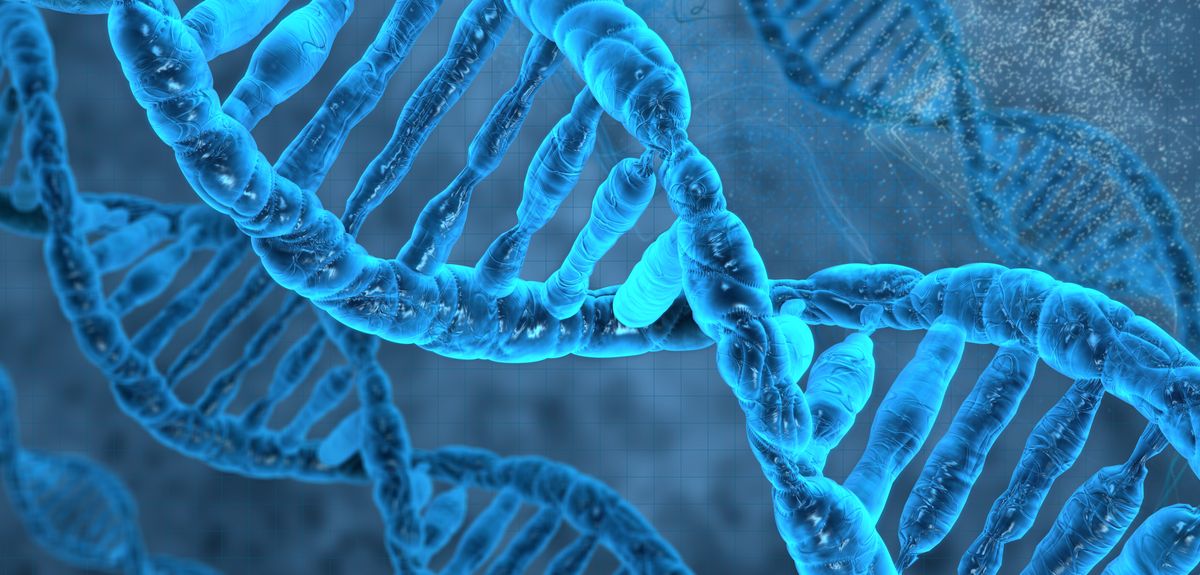
Image credit: Shutterstock
Time to step inside your DNA
Researchers at the MRC Weatherall Institute of Molecular Medicine (MRC WIMM) have developed technology that allows scientists to explore the complex 3D structure of DNA in Virtual Reality. In a newly published pre-print, the team describes their tool, which is now freely available to all.
Working out the sequence that makes up genetic code is now routine in medical research, but the sequence is not the whole story; genes are also turned on and off by physical interaction between specific parts of DNA.
Consider chromosome 1, just one of the 23 paired chromosomes we have: An intricately folded chain of 250,000,000 nucleotides containing 4,220 genes which physically interact with each other in three dimensions.
The molecular origami of these interactions needs to be very precise, and mistakes can literally be the difference between life and death. Changes in the folding of DNA is believed to be associated with a range of diseases, including cancer.
All 22,000 of the genes we carry are contained within 2 meters of DNA, which is similarly packaged into complex folds and whorls in the nuclei of every one of the 37 trillion cells of the body.
Visualising in 3D
Working out the 2D sequences of nucleotides that make up the genetic code in our DNA is crucial in understanding how genes work, but understanding the physical interactions between the folds of DNA requires a leap into a new dimension.
That’s where Stephen Taylor and Jim Hughes, from the Centre for Computational Biology at the MRC WIMM, come in. They put their expertise in computational biology and gene regulation together with experts in real time computer graphics and human-machine interaction at Goldsmiths, University of London, to produce CSynth. CSynth is an interactive tool that allows scientists to visualise a whole chromosome of DNA in 3D and track points of physical interaction.
Unlike comparable tools, CSynth combines interactive modelling with the ability toconnect what they see in their 3D model with the DNA sequence information freely available online. Users can dynamically change parameters and compare models to see how this might affect genes and other elements in the DNA, such as the switches that turn genes on and off. An additional feature of CSynth is that it combines its state-of-the-art computational model with Virtual Reality. This means that researchers can virtually step inside the DNA structure and explore and manipulate DNA molecules in a new way.
Learning tool
The potential to really visualise DNA also makes CSynth an excellent learning and public engagement tool, especially when combined with the Virtual Reality. Thousands of people have experienced CSynth at the Royal Society Summer Exhibition, the Cheltenham Science Festival and many schools and institutes.
The Oxford team has already collaborated with other researchers at the MRC WIMM to examine how the DNA that codes for part of the haemoglobin complex (the molecule that transports oxygen in red blood cells) folds in 3D, and how the folding changes in different cell types.
What’s new is that the software is freely available to anyone who has access to a web browser. Any scientist can now upload their own data to model and explore at http://csynth.org/. It doesn’t need software installation and is extremely fast to run. The researchers hope that this public web interface makes CSynth useful for education and learning too, and that researchers can share their models online.
But perhaps most importantly, CSynth will help scientists at Oxford and beyond identify potential structures and genetic elements associated with disease and to understand the impact of DNA structure on function.